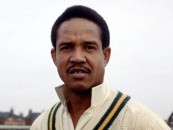Relinquished of his role as England captain, Kevin Pietersen will have felt a number of emotions in the last two weeks. Anxiously he will have awaited the ECB’s decision to his ultimatum regarding his and Peter Moores respective positions, then the hurt of not receiving the full backing (from the board and allegedly some of the players) he may have expected, now the feeling of unfinished business with the captaincy role, but no clear signs of regret. He believed what he was doing was for the right reasons, although on reflection maybe there were other ways around the situation.
 FEATURES
FEATURES
Stuart continues his series of historical player reviews moving onto the Australian David Hookes who tragically lost his life in 2004 after being punched by a hotel bouncer outside a pub where he had been drinking with Victorian cricket players.
There are many players who are said to have wasted the natural talent that was bestowed upon them. Usually it is the highly attacking batsmen who wear this tag; their desire to dominate and destroy the bowlers leading to their earlier than desired exit from the crease. Wayne Prior, the former Australian opening bowler, once refuted this argument, commenting that the expectation and sheer sense of excitement that flows through the fellow players, umpires and spectators when such a batsman arrives in the middle is sufficient justification for the use of their talent. The man that Prior was specifically referring to was David Hookes; a man whose test batting record does not reflect the anticipation of the crowd, and the anxiety of the bowlers, whenever he strode out to commence the battle.
Throughout the world of sport there are few individuals who are universally recognized for pioneering the techniques of their chosen sport. The Fosbury Flop in high jump, so named after Dick Fosbury, is one clear example of an athlete’s contribution to their sport’s evolution being easily identified. Within cricket circles, it is obviously impossible to say with certainty the first person to introduce the square cut or the drive to the batsman’s armory of shots, however cricket historians appear unanimous in their recognition of an Indian batsman as the first player to master play off his pads with the leg glance. This man was K.S. Ranjitsinhji, known by all supporters of the game simply as Ranji.
New Zealand were the fifth country to play Test Cricket back in 1929/30 when an England team lead by Harold Gilligan played a four match series. The purpose of this article is to enable comparisons to be made with the more recent elevations of Zimbabwe and Bangladesh and, perhaps, to stimulate some debate.











